Three factors profoundly affect the quality of our breathing
-
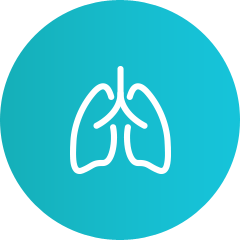
Our Breath Pattern
-
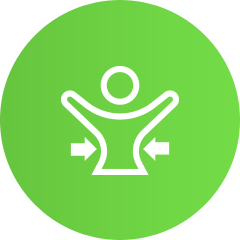
How We Use Our Diaphragm
-
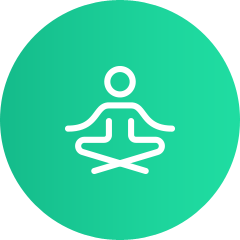
Our Posture
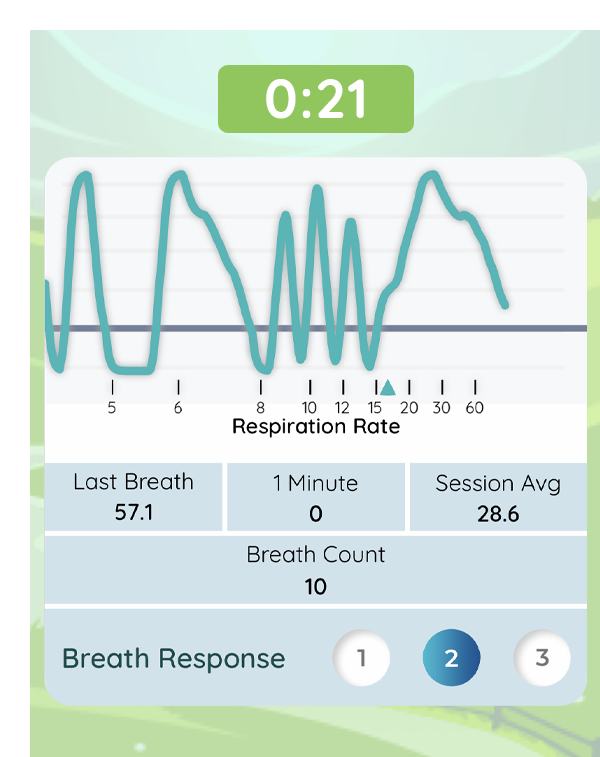
Breath Pattern
![]() A breath pattern goes far beyond what can be
captured by a simple summary statistic such
as respiration rate. It is defined by how we breathe over time, with parameters such as inhalation time, depth, retention, smoothness, exhalation time, and holding time between breaths. Recent studies have found that the patterns we employ, both consciously and unconsciously, can have a significant impact on our physiology and mental wellness. For example, this research analyzed a range of studies which found that certain rhythmic breathing patterns, when properly practiced, have significant effects on conditions such as depression, anxiety, insomnia, and stress
related illnesses including post traumatic stress disorder. In this specific example, a rhythmic breathing technique was evaluated which is composed of at least four distinct
breathing patterns. As another example, this study
considered the effects of rhythmic breathing and found positive effects on immune function. The lesson here is that our breath pattern can present a valuable opportunity to positively impact our health when we choose to practice and consciously employ specific types of intentional patterns.
A breath pattern goes far beyond what can be
captured by a simple summary statistic such
as respiration rate. It is defined by how we breathe over time, with parameters such as inhalation time, depth, retention, smoothness, exhalation time, and holding time between breaths. Recent studies have found that the patterns we employ, both consciously and unconsciously, can have a significant impact on our physiology and mental wellness. For example, this research analyzed a range of studies which found that certain rhythmic breathing patterns, when properly practiced, have significant effects on conditions such as depression, anxiety, insomnia, and stress
related illnesses including post traumatic stress disorder. In this specific example, a rhythmic breathing technique was evaluated which is composed of at least four distinct
breathing patterns. As another example, this study
considered the effects of rhythmic breathing and found positive effects on immune function. The lesson here is that our breath pattern can present a valuable opportunity to positively impact our health when we choose to practice and consciously employ specific types of intentional patterns.
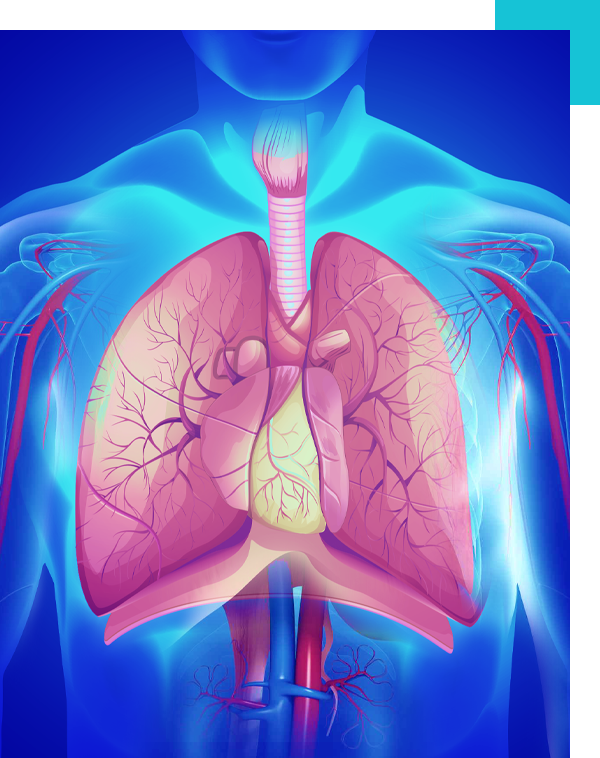
Diaphragmatic vs. Chest Breathing
![]() The diaphragm is the dome-shaped sheet of
muscle under the lungs that serves as the main
muscle of respiration. Diaphragmatic breathing, also known as belly breathing, is an efficient, natural, and healthy form of breathing where the breather uses more of their entire lung capacity compared to chest breathing. During diaphragmatic breathing, the breather more fully contracts their diaphragm to enlarge the volume of the thoracic cavity to draw air more fully into the lungs, causing the abdomen to expand and belly to rise during inhalation. Chest breathing on the other hand, typically involves shallow breaths taken from the upper lobes of the lungs, primarily and unnaturally using chest muscles to inflate the lungs, with minimal diaphragm and belly movement. Diaphragmatic
breathing delivers a significantly larger amount of oxygen to the bloodstream, since the lower lobes of the lungs—which contain a richer supply of blood vessels compared to the upper—receive more air.
The diaphragm is the dome-shaped sheet of
muscle under the lungs that serves as the main
muscle of respiration. Diaphragmatic breathing, also known as belly breathing, is an efficient, natural, and healthy form of breathing where the breather uses more of their entire lung capacity compared to chest breathing. During diaphragmatic breathing, the breather more fully contracts their diaphragm to enlarge the volume of the thoracic cavity to draw air more fully into the lungs, causing the abdomen to expand and belly to rise during inhalation. Chest breathing on the other hand, typically involves shallow breaths taken from the upper lobes of the lungs, primarily and unnaturally using chest muscles to inflate the lungs, with minimal diaphragm and belly movement. Diaphragmatic
breathing delivers a significantly larger amount of oxygen to the bloodstream, since the lower lobes of the lungs—which contain a richer supply of blood vessels compared to the upper—receive more air.
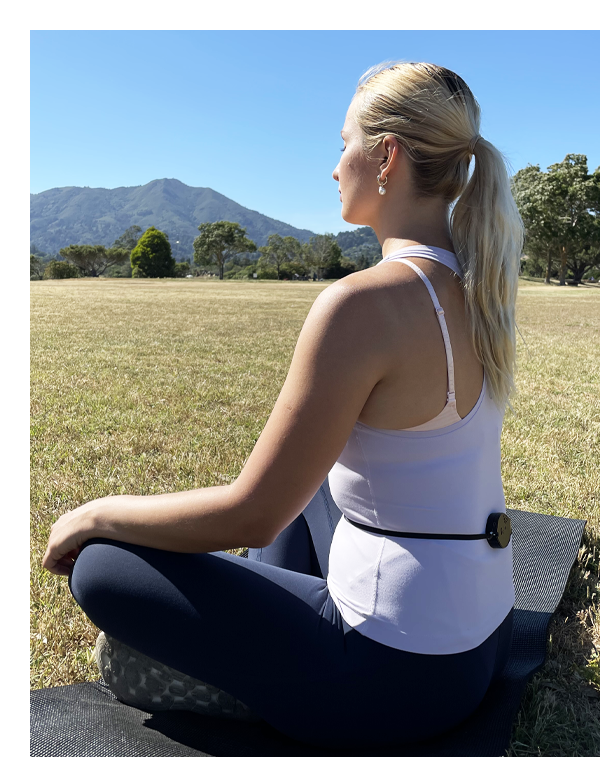
Posture
![]() A strong connection between posture and breath has been emphasized by numerous
traditions for thousands of years, including Yoga Pranayama. The basic idea is that good posture facilitates good breathing. This idea is now supported by a number of recent studies and research. For example, this research paper found a significant relationship between a particular seated posture and the quality of pulmonary function. These researchers found that in slumped sitting,
spirometric measurements of forced vital capacity, forced expiratory volume, and peak expiratory flow were all significantly decreased compared to a normal upright seated posture. One explanation is that posture affects the
distribution of weight of visceral organs on the diaphragm, which affects its mobility when breathing. Slumped sitting in particular can have an impeding effect on diaphragm mobility. This research found that posture does in fact directly affect diaphragmatic movement.
A strong connection between posture and breath has been emphasized by numerous
traditions for thousands of years, including Yoga Pranayama. The basic idea is that good posture facilitates good breathing. This idea is now supported by a number of recent studies and research. For example, this research paper found a significant relationship between a particular seated posture and the quality of pulmonary function. These researchers found that in slumped sitting,
spirometric measurements of forced vital capacity, forced expiratory volume, and peak expiratory flow were all significantly decreased compared to a normal upright seated posture. One explanation is that posture affects the
distribution of weight of visceral organs on the diaphragm, which affects its mobility when breathing. Slumped sitting in particular can have an impeding effect on diaphragm mobility. This research found that posture does in fact directly affect diaphragmatic movement.
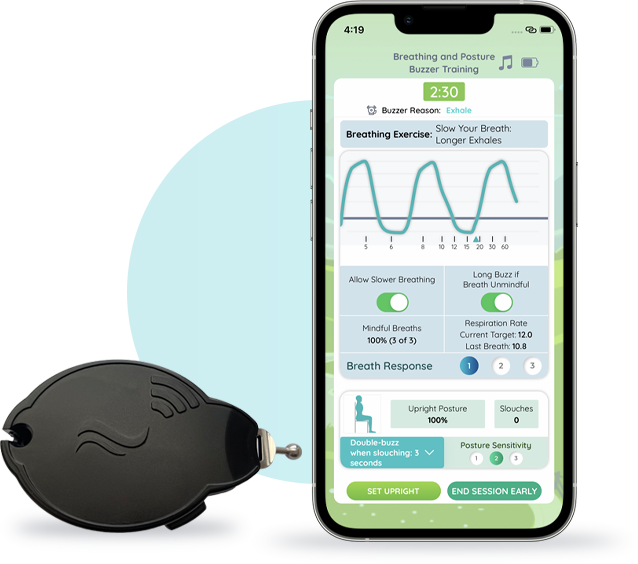
Prana
![]() The Prana wearable and app utilize sensor-based feedback to directly guide your breath
patterns, offering over 80 distinct breathing exercises derived from dozens of scientific studies and research taken place over the past 20+ years (see below). Our platform also specifically trains and tracks diaphragmatic breathing as well as both upper and lower back posture,
integrating these 3 important and wholistic aspects of true breathing quality, previously unaddressed by systems such
as spirometers or pulse oximeters. Prana can flexibly train breathing and posture together, or independently. Prana
additionally tracks 15 distinct body measurements including body fat percentage, factors also linked to many important
aspects of our health and wellness.
The Prana wearable and app utilize sensor-based feedback to directly guide your breath
patterns, offering over 80 distinct breathing exercises derived from dozens of scientific studies and research taken place over the past 20+ years (see below). Our platform also specifically trains and tracks diaphragmatic breathing as well as both upper and lower back posture,
integrating these 3 important and wholistic aspects of true breathing quality, previously unaddressed by systems such
as spirometers or pulse oximeters. Prana can flexibly train breathing and posture together, or independently. Prana
additionally tracks 15 distinct body measurements including body fat percentage, factors also linked to many important
aspects of our health and wellness.

